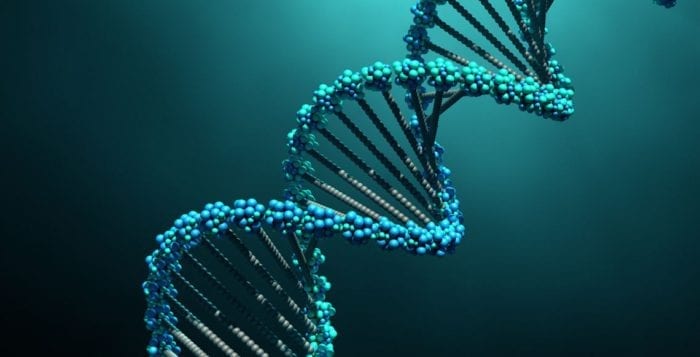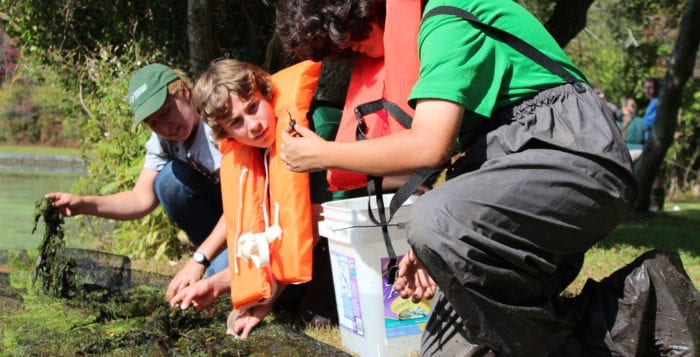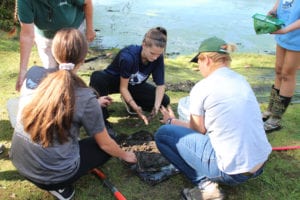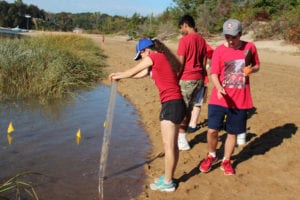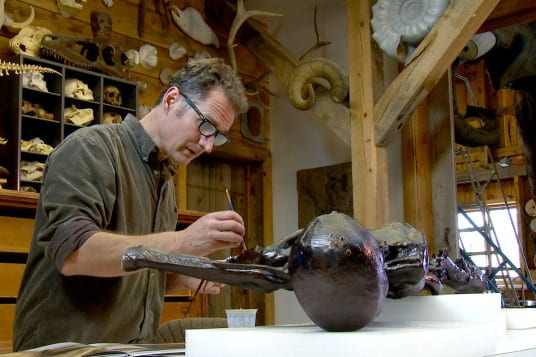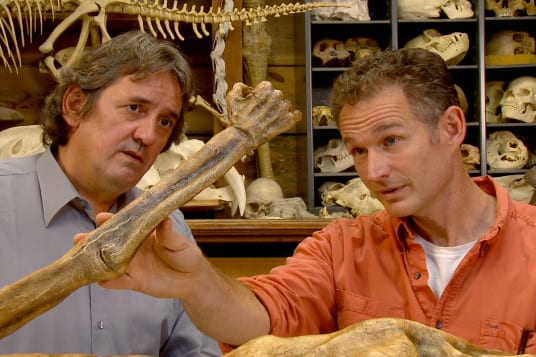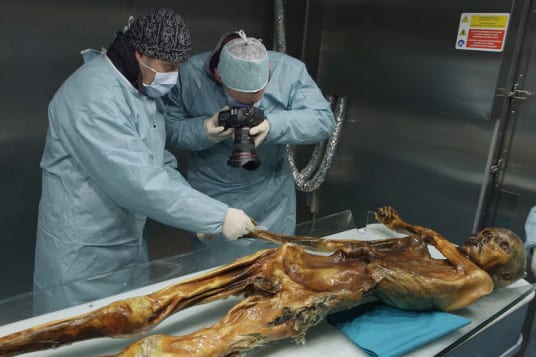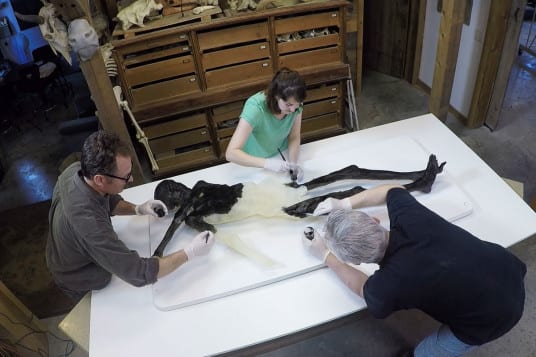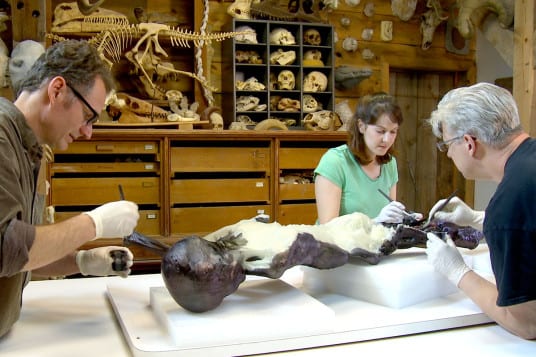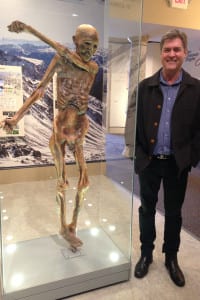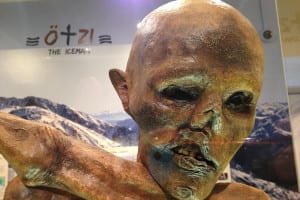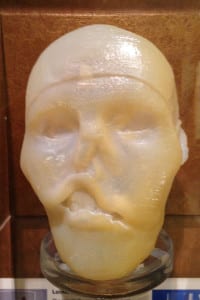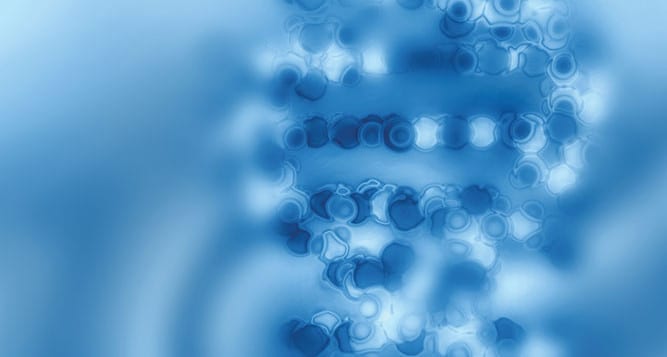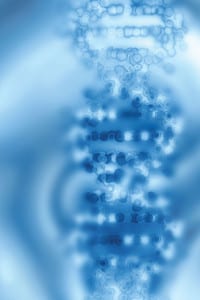By Daniel Dunaief
In the nucleus of the cell, researchers often focus on the genetic machinery, as the double-helical DNA sends signals that enable the creation of everything from my fingers that are typing these words to your brain that is processing what you’ve read.
But DNA, which occupies most of the nucleus, is not alone. Scattered through the nucleus are protein and RNA filled structures that have an influence on their important gene-bearing nuclear cohabitants, including speckles.
One of the newest members of the Cold Spring Harbor Laboratory team, Assistant Professor Kate Alexander, who joined the lab in August, is focused on a range of questions about these speckles, which represent about 10 to 30 percent of the nuclear volume.
Preliminary data from Alexander’s lab support the idea that speckles can signal how a person responds to various types of therapy, although careful extensive follow up studies are needed, Alexander explained. She would like to know how the speckles are affecting the genetic machinery.
While speckles have been known since 1910, the ways they affect healthy cells and diseased cells remains a mystery. In some cases, normal or aberrant speckles can signal how a person responds to various types of therapy.
Normal speckles are in the center of the cell nucleus, while aberrant speckles are more scattered. Aberrant speckles can activate some of the surrounding DNA.
At this point, Alexander and her colleagues have “found that normal or aberrant speckle states correlate with survival of clear cell renal cell carcinoma. This accounts for over 80 percent of all kidney cancers.”
Medical choices
After a patient with clear cell renal cell carcinoma receives a cancer diagnosis, the first line of treatment is usually surgery to remove the tumor in the kidney. In addition, doctors could treat the tumor with a systematic anti-cancer therapy. The treatments themselves can and often do cause difficult side effects, as therapies can harm healthy cells and can disrupt normal biological functioning.

Alexander is hoping speckles will help predict the state of the tumor, offering clues about how it might respond to different types of treatments. She could envision how aberrant speckles could correlate with better responses to one drug, while normal speckles might correlate with better responses to another treatment.
In her research, Alexander is exploring how DNA is organized around speckles, as well as how the speckles affect DNA.
“Speckles can change and impact what’s happening to all the DNA that’s surrounding them,” she said.
Over 20 tumor types show evidence for both normal and aberrant speckles. Aberrant tumors can occur in many types of cancer.
“The consequence of [speckles] becoming normal or aberrant are starting to become more clear,” she said, although there is “still a lot to learn.”
Alexander is trying to figure out how to alter the conformation of these speckles. During cancer, she suspects these speckles may get trapped in a particular state.
In one of the first experiments in her lab, she’s culturing cells in an incubator and is trying to predict what cues may cause speckles in those cells to switch states.
‘Speckle club’ leader
Alexander previously did postdoctoral research at the University of Pennsylvania in the laboratory of Shelley Berger, where she was also a Research Associate. She led a subgroup in the lab known as the “speckle club.”
Charly Good, who is now Senior Research Investigator in Berger’s lab, worked with Alexander at Penn from 2017 until this summer.

Alexander “helped recruit me to the postdoc I ended up doing,” said Good who appreciated Alexander’s computational skills in analyzing big data sets. Speckles represent an “up and coming area” for research, which Alexander and Berger are helping lead, Good suggested.
Alexander’s quick thinking meant she would go to a talk and would email the speaker as soon as she got back to her desk. “Her brain is always spinning,” said Good.
Alexander is building her lab at CSHL. Sana Mir is working as a technician and is helping manage the lab. Recently, Hiroe Namba joined the group as a postdoctoral researcher. In the next few years, Alexander would like to add a few graduate students and, within five years, have about eight people.
Originally from Tigard, Oregon, Alexander attended Carleton College in Northfield, Minnesota. In her freshman year, she tried to get into a physics class that was full and wound up taking a biology class. She was concerned that biology classes were mostly memorization. When she started the course, she appreciated how the science involved searching for missing pieces of information.
Cold Spring Harbor Laboratory appealed to her because she could go in whatever direction the research took her.
For Alexander, scientific questions are like a layer of cloth with a few threads sticking out.
“You see one sticking out and you start to pull,” Alexander said. “You don’t necessarily know what’s going to come out, but you keep getting the urge to pull at that thread. You realize that it is connected to all these other things and you can look at those, too.”
She is excited to cross numerous disciplines in her work and is eager to think about how her research might “interplay across those fields and boundaries.”
Speckle origins
As for speckles, Alexander observed during her postdoctoral research how one factor seemed to influence a neighborhood of genes.
For that to occur, she realized that something had to affect those genes at the same time in the physical space. She hadn’t known about speckles before. A few of her colleagues, including Good, came across speckles in their analysis. That made Alexander curious about what these speckles might be doing.
She saw an opening to pursue connections between changes in these potential gene activators and illnesses.
Researchers know that viruses can use speckles to help them copy themselves.
If they are used by viruses “they must be important” and they “probably go wrong in a lot of diseases,” Alexander said. There are a series of neurodevelopmental disorders called “speckleopathies” that involve mutations in proteins found inside speckles.
“We have the computational and experimental tools to start investigating them across a wide variety of conditions,” she said.


